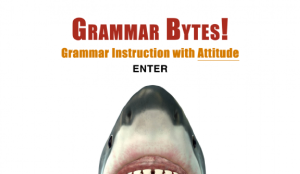 |
March 2, 2018 Volume 24, Number 9 |
Research and Education |
General Interest |
Revisited |
Network Tools |
In the News |
Research and EducationBack to Top | |
 |
|
 |
|
 |
|
 |
|
 |
|
 |
|
 |
|
 |
|
General InterestBack to Top | |
 |
|
 |
|
 |
|
 |
|
 |
|
 |
|
 |
|
 |
|
RevisitedBack to Top | |
 |
|
Network ToolsBack to Top | |
 |
|
 |
|
In the NewsBack to Top | |
Dutch Supermarket Chain Ekoplaza Opens Store with Plastic-Free Aisle | |
|
World's first plastic-free aisle opens in Netherlands supermarket Dutch Supermarket Introduces Plastic-Free Aisle Netherlands opens world's first plastic-free supermarket aisle as UK urged to follow example What Would a World Without Plastics Look Like? How Much Plastic is in the Ocean? Living plastic-free is harder than you think On Wednesday, the Dutch supermarket chain Ekoplaza opened a store in western Amsterdam that boasts an entirely plastic-free aisle. The aisle contains approximately 700 items, including meats, yogurt, rice, sauces, cereal, and chocolate, as well as fresh fruit and vegetables. Some of these items are packaged in biodegradable materials, while others are packaged in glass, metal, or cardboard. Ekoplaza CEO Erik Does notes that "[p]lastic-free aisles are a really innovative way of testing the compostable biomaterials that offer a more environmentally friendly alternative to plastic packaging." While Ekoplaza is the first grocery store chain to introduce a plastic-free aisle, the idea has garnered a great deal of support across Europe in recent months. The European advocacy group A Plastic Planet recently launched a campaign to urge grocery stores to introduce plastic-free aisles. In January, British Prime Minister Theresa May endorsed plastic-free aisles in stores in a speech. A recent opinion poll in the UK revealed that 91% of Britons supported the idea. Meanwhile, the European Union announced a plan last month to ensure that plastics sold in Europe would be fully recyclable by the year 2030. Ekoplaza plans to introduce plastic-free aisles to all 74 of its stores by the end of the year. [MMB] The first three links take readers to news articles from Matthew Taylor at The Guardian, Christopher F. Schuetze at The New York Times, and Emily Beament at The Independent. The fourth link takes visitors to a short video from DNews Science Plus that explains why plastics are so difficult to recycle and addresses possible alternatives to plastics. This video is accompanied by several resources for those interested in further reading. The fifth link takes readers to a video from It's OK to Be Smart (a series by PBS's Digital Studios) about plastic in the oceans. Finally, the last link takes readers to a short documentary from the UK's Telegraph that follows one family in their quest to go a week without using plastic. | |
